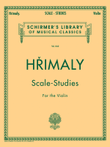Large Ensemble Alto Saxophone,Banjo,Baritone Saxophone,Clarinet,English Horn,Flute,Guitar,Harpsichord,Marimba,Oboe,Organ,Piano,Soprano Saxophone,Tenor Saxophone,Treble Clef Instrument,Trumpet,Ukulele,Vibraphone,Violin,Xylophone - Level 4 - Digital Download
SKU: A0.931832
Composed by Nathan Petitpas - Dots and Beams. Instructional. Score and parts. 124 pages. Dots and Beams #4269045. Published by Dots and Beams (A0.931832).
Dots and Beams creates a wide variety of reading materials for musicians at all skill levels and for all instruments. The goal of Dots and Beams is to break music down into its elements and provide reading material focused on systematically developing each element in isolation. These books can be used in any number of ways and are an invaluable tool for creative musicians who enjoy inventing new exercises. In addition, these books make excellent, thoughtfully graduated sight-reading material for a wide range of ability levels from student to professional.
This collection presents its user with a series of notes on a treble staff in the context of increasingly complex rhythmic material.
The pitch material in this book is entirely diatonic with a space left at the beginning of each system in which one can write a key signature. Early chapters use only notes on the staff while subsequent chapters begin to add notes on ledger lines above and below the staff. Each chapter contains two exercises in each of the following time signatures: 2/4, 3/4, 4/4, 6/8, 9/8, and 12/8. This gives exercises in 2, 3, and 4 beats per bar in both simple and compound meters. From chapter to chapter the conceptual difficulty of the rhythmic material increases.
The exercises in this collection are intentionally aimless, wandering, and difficult to internalize. They resemble standard melodies on the surface but don’t emphasize any particular tonal centre or harmonic movement. They are designed this way for several reasons.
In keeping the melodic material as non-specific as possible the door is left open for the materials to be used in conjunction with any number of exercises, something that would be much more difficult with a composition that dictates the harmonic, melodic, and rhythmic phrasing. It also allows the user to read the exercises in any key signature, making this a great tool to help students learn to think in different keys. The unpredictability of these exercises also forces the user to process every note and rhythm as its own event without relying on pattern recognition or melodic and harmonic tendencies to help in figuring out the notes and rhythms.
While I absolutely agree that the skill of predicting music’s direction from harmonic and melodic cues is an essential skill for any musician to develop, I think we will all agree that resources for this type of reading practice are already abundant. This collection, on the other hand, is designed to develop the user’s ability to process raw musical data. Once this skill is strengthened and internalized it is my belief that the act of reading more predictable and typically melodic music will be made much easier as the processing of notes and rhythms will be second nature, allowing the musician to focus on musicality. This book is a supplement to practising sight-reading using "real music," not a replacement; I encourage you to use both.
If this material is being used to practice sight-reading, it is encouraged to cycle through the exercises quickly rather than dwelling on a particular exercise for a long period of time. The goal in practising sight-reading is not to learn the material but to develop the skill of reading new material.
Some suggestions for how to use this book include:
-
Read each exercise in all 15 key signatures from 7 flats to 7 sharps.
-
Practice key changes by writing in a different key signature for each system.
-
Increase the challenge of the previous exercise by using a metronome on weak beats. For example, instead of putting the metronome click on each quarter-note in 4/4, play the exercise with the metronome giving the second eighth note of each beat, or the last sixteenth note, or beats 2 and 4. Be creative with this one, the possib.
This product was created by a member of ArrangeMe, Hal Leonard’s global self-publishing community of independent composers, arrangers, and songwriters. ArrangeMe allows for the publication of unique arrangements of both popular titles and original compositions from a wide variety of voices and backgrounds.
Digital Downloads are downloadable sheet music files that can be viewed directly on your computer, tablet or mobile device. Once you download your digital sheet music, you can view and print it at home, school, or anywhere you want to make music, and you don’t have to be connected to the internet. Just purchase, download and play!
PLEASE NOTE: Your Digital Download will have a watermark at the bottom of each page that will include your name, purchase date and number of copies purchased. You are only authorized to print the number of copies that you have purchased. You may not digitally distribute or print more copies than purchased for use (i.e., you may not print or digitally distribute individual copies to friends or students).
















![Right@Sight for Violin, Grade 3 [incl. CD]](https://www.sheetmusicplus.com/smp-cdn-assets/items/17439859/cover_images/cover-large_file.png@110)













































